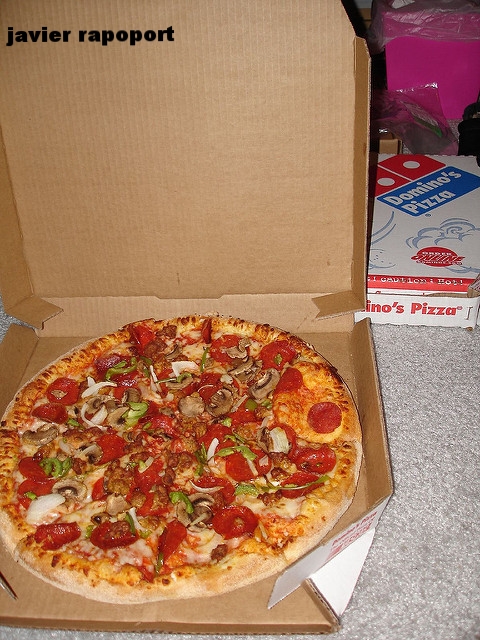CULINARY COMPENDIUM 11ish - A BOUQUET OF FLOURS

Why Hello there, and welcome back to Kitchen Catastrophe’s Culinary Compendium, our ongoing segment you may have entirely forgotten about, because we haven’t done a full edition of it in…about 9 months, though we did have a Micro edition in February. If you’re therefore unfamiliar with the form, a brief recap is in order.
The Culinary Compendium is our effort to provide a delightful dictionary for dining, an entertaining encyclopedia of eating, and other alliterative and assonant assignations. In short, they’re a way for us to create a shared knowledge base by providing definitions for various cooking terms, and to have some fun by weaving in jokes, references, and so on.
We haven’t done one recently because…well, because of an internal bias FOR them that I have. Yes, I haven’t been doing them because I LIKE them too much, a phrase one more commonly hears in the sexual politics of hot people in their mid-twenties with poor relationship skills than in the bloggings of food critics, but I pride myself on my eccentricities. The thing is, culinary compendiums are easier for my brain to produce, because they’re a “short-form” joke format: each definition contains itself, ending the thought when we move on. This is the format my improvisational comedy group used for the majority of the 8-9 years I was involved with it, so it comes very naturally to me. Thus, mentally, these kinds of posts are ‘easy’, and I’ll tend to want to do them when/if I’m running late, don’t have another idea, or my life has gotten too hectic. They’re the “just order a pizza” of blogging.
"I'll make up for it by doing a multi-part series on mushrooms later in the week."
This led to me trying to avoid them, because they were the ‘easy out’ in any given situation, and I’ve been trying to push myself for more authentic and heart-felt content. And also because the last one I did was a ‘Part 1’, meaning I felt that I had to do the Part 2 before I could move on. Luckily, or unluckily, depending on your opinion on my integrity, I put myself in a position where I NEEDED an easy out, and then unwittingly gave myself one. As I floundered through the last six days of drinking, packing and unpacking, socializing, and riding in cars, I ended up saying in one fo the few windows I had for writing that I’d write a compendium…and then not writing it. SO let’s rejoice as I fall off the wagon, and into the Mill, with CULINARY COMPENDIUM: FLOURS.
Since today is going to be about variety of flours, we should logically start with what the heck FLOUR is.
FLOUR
1. (n) – A powder made by grinding up raw grains or roots into…powder…used to make breads, pastas, pastries, or to thicken dishes.
2. (n) The reason “pasta” and “pastry” have the same root as “paste” and “pesto”: they’re built out of crushed grains mashed with fats and water to make doughs you mash into other shapes.
3. (n) – one of the earliest and yet still little-known explosive agents. Flour, like any flammable dust, can create what’s called a ‘dust explosion’ if certain conditions are met. Basically, flour dust suspended in the air in a confined space will ignite, consuming oxygen, and igniting nearby particles. This will, in a small/unconfined spaces, just create a fireball. But in a sufficiently confined space, it’ll create a backdraft effect, suck all the oxygen out of the space, and then blow up the container in an attempt to reach more oxygen.
Beautifully demonstrated/explained by Mr Wizard here.
No, seriously, that's his name. Google "Mr Wizard Flour explosion" for the vid.
00 ~
1. (n) an Italian designation for a specific variety of flour, particularly one ground at the lowest possible setting, and with all of the wheat’s bran and germ removed. The default choice for making pasta in Italy. Comparable to “pastry” flour in the US, soft flour in the UK, or 405 flour in Germany.
2. A useful example in illustrating the fact that different countries organize their flours differently, much as they do with sugars and other products, a factor that may need to be considered in using recipes from international sources.
3. Not, as one might assume, in any way connected with MI-6, or secret agents named James.
ALL-PURPOSE ~
1. (n) A US designation for flour with a mild protein content, and middling gluten production, which makes it a functional choice in the creation of the majority of baked goods. Hence, ‘all-purpose”.
ALMOND, AMARANTH, RICE, ET AL
1. (n) Flours not made from wheat, the default flour option. Typically, but not always, Gluten-free (specifically, Spelt or Rye flours, as offshoots of Wheat, do still produce Gluten) and therefore very popular among that crowd.
BRAN
1. (n) the outer layer of a grain seed, containing high amounts of fiber and oils. Not technically a flour, but it can be found IN flour, or used in baked good.
2. The second worst Stark
Eat a Dickon, Rickon. You added nothing.
BREAD ~
1. (n) a variety of flour with higher protein content (and thus higher Gluten content), optimal for creating doughs meant to hold air bubbles and produce a firmer, chewier product. Like, for instance. Bread. Compare to CAKE FLOUR
CAKE ~
1. Oh, shit, is it comparison time already?
2. (n) a flour with lower-than-usual protein content, In fact, the LOWEST, allowing baked goods to crumble easily, and absorb oils in the batter for a richer, moister crumb.
Did someone call for a Salaciously moist crumb? HAHAHAHAHAHA.
REFINED/UNREFINED ~
1. (n) The great divide between all Englishmen.
2. (n)A complicated distinction that refers to the chemicals and processes used to treat the grains during their pulverization into flour. Many flours are ‘bleached’ or ‘refined’ to create a more visually appealing product. Some are ‘enriched’, a refining technique where some of the nutrition lost with the removal of the coarser bran and germ is reintroduced through other methods, and so on.
SELF-RISING ~
1. (n) one of those irritating morning flours that doesn’t need an Alarm clock, and watches the sunrise or some other crap.
2. (n) a flour with leavening agents added In at the industrial level, in order to save time and steps from home cooks making specific goods, particularly short breads like biscuits, scones, or muffins. Basically just flour with 1 tsp of baking powder and some salt added to every cup.
SEMOLINA
1. (n) a type of WHEAT MIDDLING from DURUM. Oh boy, there’s a lot going on here. Let’s get those guys built in, and we’ll come back to this.
2. WHEAT MIDDLING: basically, all the stuff you get out of making flour that isn’t flour. The MIDDLE products made when processing WHEAT, hence the name.
3. DURUM: the second most common variety of wheat used in the creation of flours.
4. (n) a durum wheat middling that is used in a variety of foods for its unique texture and nutritional composition. Essentially grits, but made with wheat instead of corn.
5. The basic component of many desserts in Europe, couscous in the Middle East, and Cream of Wheat in America.
I feel like we got the bad end of that list.
WHOLE WHEAT ~
1. (n) flour created through a much less thorough process, removing essentially none of the bran or germ from the flour in its creation.
2. Often added to recipes using more processed flours to reintroduce texture, flavor, and nutrition that was removed in processing, or to add richer brown color to the finished product.
And that concludes the Kitchen Catastrophe Flour Power Hour. Join us next week when our topic will be something, probably, assuming Jon gets his life together fast enough to make a decision. Things are weird. And now I want Cream of Wheat. I don’t even particularly LIKE Cream of Wheat. I blame…the sky. It’s all this smoke. Jacking me up.
Are you still here? Why?
MONDAY: SERIOUSLY, I DON’T KNOW. MAYBE CHICKEN MARSALA, IF I DON’T COME UP WITH SOMETHING ELSE.
THURSDAY: JOE TAKES US ON A BONNY TOUR OF SCOTLAND, THE ONLY WAY JON UNDERSTANDS: THROUGH LIQUOR.










